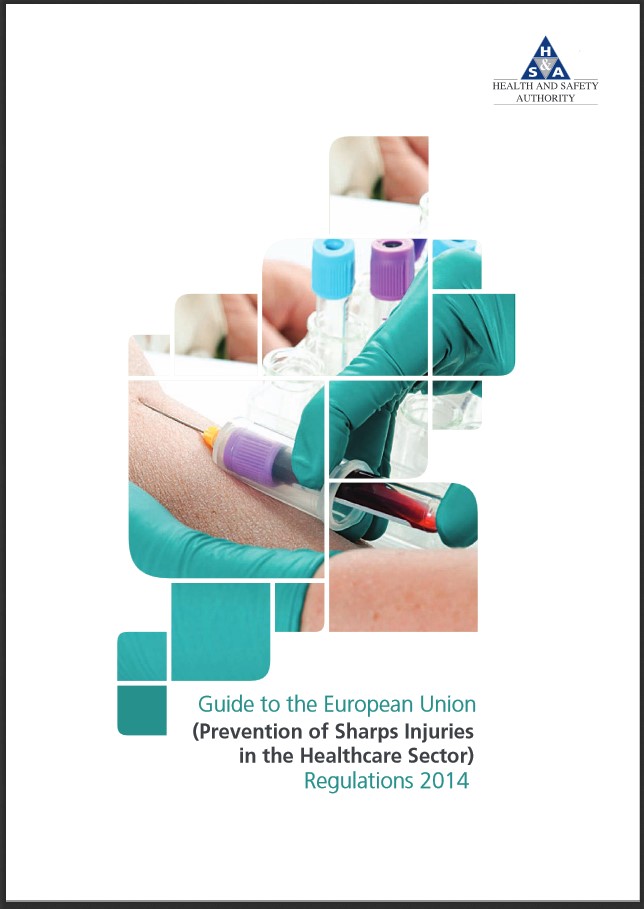Prevention From Sharp Injuries At The Workplace
Workers in the healthcare sector are at risk from needlestick or sharp injury. Such injuries are of concern as the worker may become infected by blood-borne pathogens (viruses, bacteria, fungi and other micro-organisms).
The Human Immunodeficiency Virus (HIV) and hepatitis B (HBV) or C (HCV) are the commonest risks, but there are more than 20 blood-borne diseases that may be transmitted.
In Europe, it is estimated that there are 1 million needlestick injuries annually. It is not just medical professionals who are at risk. While nurses working in acute medical situations are identified as being at the highest risk, many other workers have the potential to sustain these injuries. For example, auxiliary staff such as cleaners and laundry staff can also be at significant risk.
Guide To The EU (Prevention Of Sharps Injuries In The Healthcare Sector) Regulations 2014.
Click here to read the Sharps Regulations Guidelines.
The objective of the guidelines is to achieve the safest possible working environment by preventing injuries to workers caused by all medical sharps (including needlesticks) and protecting workers at risk in the hospital and healthcare sector.
This can be achieved by putting in place the following preventive and protection measures:
– eliminating the unnecessary use of sharps
– providing medical devices
– incorporating safety-engineered protection mechanisms
– implementing safe systems of work
– implementing safe procedures for using and disposing medical sharps
– banning the recapping
– using personal protective equipment
– vaccination
– information and training
Sources:
https://osha.europa.eu/en/sector/healthcare/prevention-sharp-injuries-workplace
http://www.hsa.ie/eng/Publications_and_Forms/Publications/Latest_Publications/Guide_to_the_European_Union_Prevention_of_Sharps_Injuries_in_the_Healthcare_Sector_Regulations_2014.53338.shortcut.html#sthash.ohw8ZUiB.dpuf

